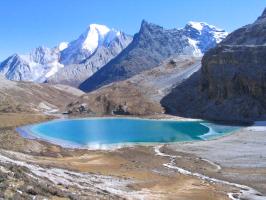Norbulingka
Located in the western suburbs of Tibet Lhasa City, Norbulingka Park is the largest man-made garden in Tibet. It was the summer getaway of the Dalai Lamas for centuries, from the late 18th century up until 1959. The park is a favorite picnic spot for locals and many festivals and dances are held there.
Built in the 1740s by the Seventh Dalai Lama and completed by the Eighth Dalai Lama on 36 hectares of land which was wild and covered with brush. It was built for the exclusive use of the Dalai Lama during the summer. The reason the site was chosen as the Dalai Lama's summer getaway was due to a spring that was there. The Seventh Dalai Lama drank from the spring to cure his health problems. The complex has been added on to many times in its history. During the Cultural Revolution, Norbulingka suffered extensive damage. In 2002 the government granted funds for restoration of some of the buildings.
Norbulingka is known as the world's highest and best preserved ancient horticultural garden. It beautifully blends the plantings with the architecture. Over 30m000 cultural relics are housed in the buildings. There are five sections in the complex. To the left of the entrance is the Kelsang Phodang, a cluster of buildings used by the Dalai Lamas as a place to worship The Buddha. There is a restored throne room in the complex. Northwest of the Kelsang Phdang is a pavilion in the middle of a lake, Tsokyil Phodrong. On the west side of the park is the Golden Phodron, built in 1922 with a cluster of buildings. North of Tsokyil Phodrong is the Takten Migyur Phodrong, built in 1954 and it is the most elegant palace in the whole of Norbulingka. It is both a temple and a villa for the Dalai Lama. It has a labyrinthine maze of rooms and halls. The first floor has 301 frescoes which depict Tibetan history. The Norbulingka complex was circled by two walls. The area inside the inner wall, which was yellow, was for the exlusive use of the Dalai Lama and his entourage. The area between the two walls was where the Dalai Lama’s family and officials lived.
Several festivals are celebrated in Norbulingka Park. The Sho Dun Festival, popularly known as the "yogurt festival" is the most famous. It is held annually during the first seven days of the seventh lunar month. The week-long festival is celebrated by eating and drinking with Tibetan opera performances.

.jpg)













